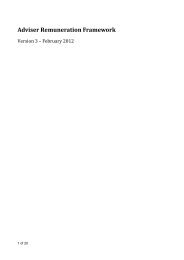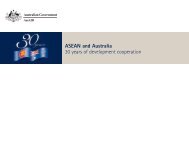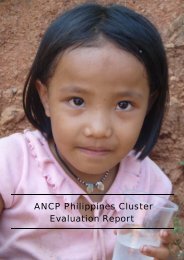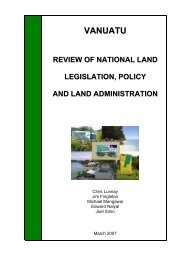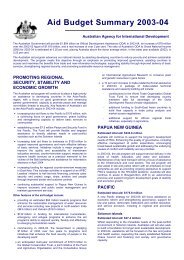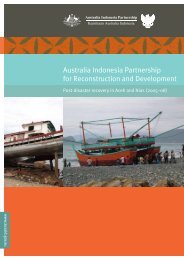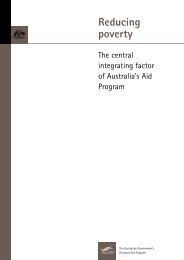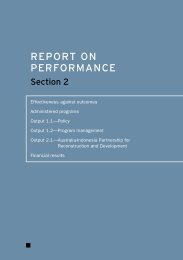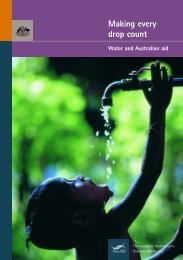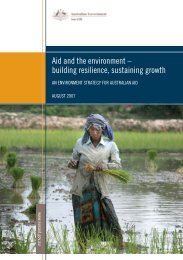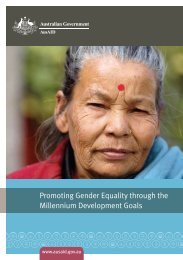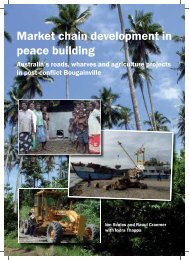Australian Aid to PNG - AusAID
Australian Aid to PNG - AusAID
Australian Aid to PNG - AusAID
Create successful ePaper yourself
Turn your PDF publications into a flip-book with our unique Google optimized e-Paper software.
ecognises that Papua New Guinea’s longer-term future depends on improvingits fiscal and administrative management capacity, its skills base, and itsrevenue sources. This is obvious from the progressions that have occurred sincePapua New Guinea obtained independence in both Australia’s aid strategies andthe changing nature of its delivery mechanisms. <strong>Australian</strong> aid has a role <strong>to</strong>play in each of these areas, so that Papua New Guinea can achieve self-relianceand begin focusing on initiatives <strong>to</strong> accelerate the country’s growth, rather thansimply maintaining current levels of development. Recent fundamental changesin the emphasis of Australia’s aid program, such as increasing the degree ofPapua New Guinean participation in and ownership of aid activities, integratingaid funding within national policies and programs, and developing workablecost recovery systems, will all be important elements in achieving thisprogression <strong>to</strong>wards sustainable development within Papua New Guinea.6.2 Improving Impact and its MeasurementAt present, the data available <strong>to</strong> assess the impact of <strong>Australian</strong> aid in PapuaNew Guinea are very limited, and their reliability is questionable. In Australia,until the late 1980s, the success or failure of aid interventions was assessedprimarily against efficiency and input-based criteria. The development and useof performance indica<strong>to</strong>rs <strong>to</strong> measure the effectiveness of aid programs andinterventions was an initiative first introduced around 1987, as part of the<strong>Australian</strong> Government’s adoption of program budgeting. Performancemeasurement processes evolved through the 1990s, with increasing emphasisgiven <strong>to</strong> measures of the effectiveness of activity outputs.Beyond this, the very recent introduction of benchmarks or miles<strong>to</strong>nes is anattempt <strong>to</strong> develop more complete performance information, including of broaddevelopment impacts. This effort is complicated by the fact that economic andsocial statistics are often very weak in developing countries, and reliablebaseline data are rarely available. This is certainly the case in Papua NewGuinea. Baseline data are still being sought or developed <strong>to</strong> allow reliableassessments of the broader development impact of aid <strong>to</strong> be undertaken infuture. At present, efforts <strong>to</strong> attribute development advances and failures <strong>to</strong>the work of aid donors can only be based on trends and often subjectivejudgements.Even when accurate information is available, it is important <strong>to</strong> recognise thatthe question of determining the broad development impact of aid funding isextremely complex. A multitude of fac<strong>to</strong>rs influence a country’s growth anddevelopment. <strong>Aid</strong> is never the sole fac<strong>to</strong>r determining development results. It isnot usually even the primary fac<strong>to</strong>r. Even countries that are highly aiddependent have a strong desire for self-determination, and aid programs can52 The Contribution of <strong>Australian</strong> <strong>Aid</strong> <strong>to</strong> Papua New Guinea’s Development 1975–2000



